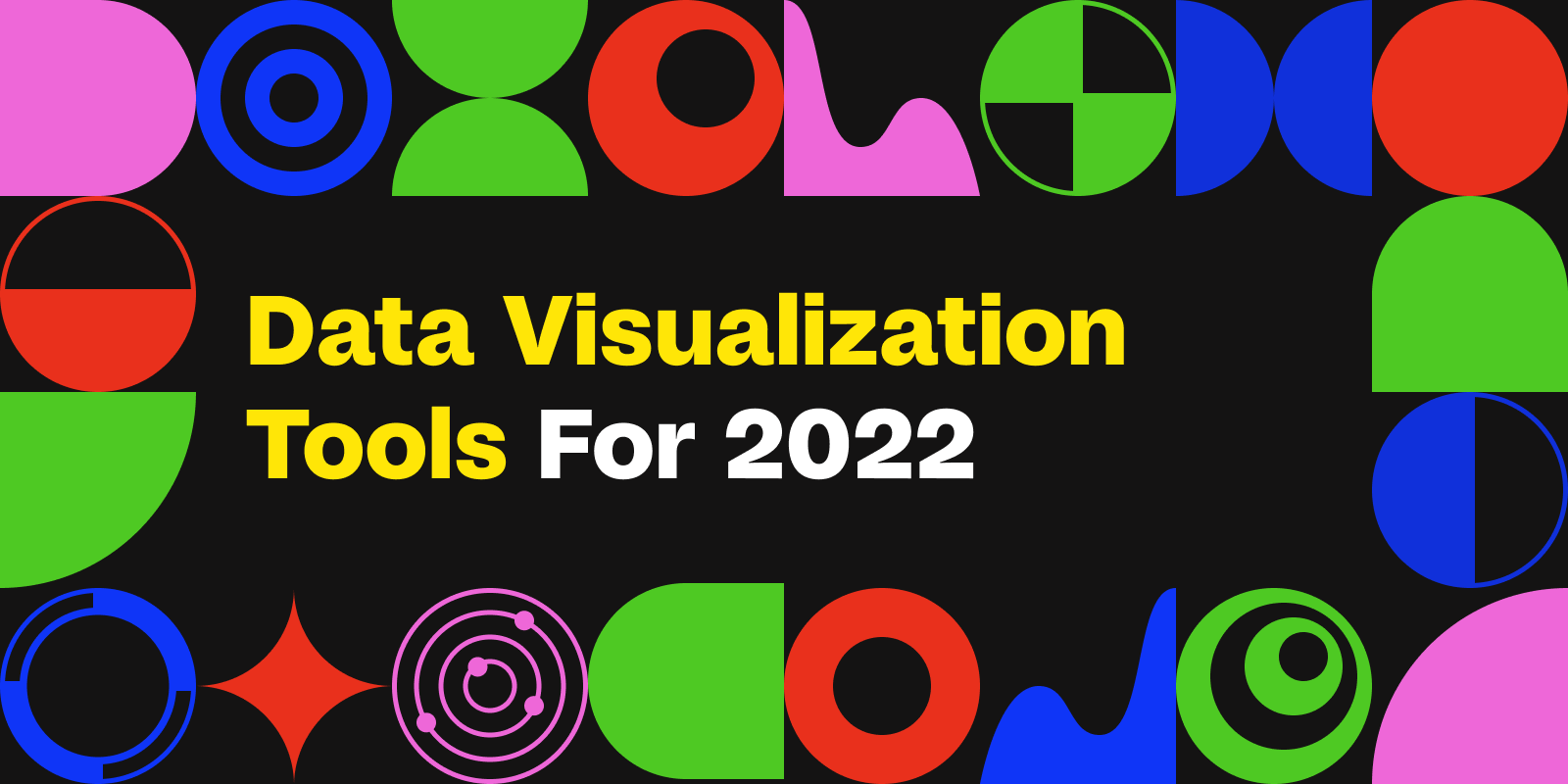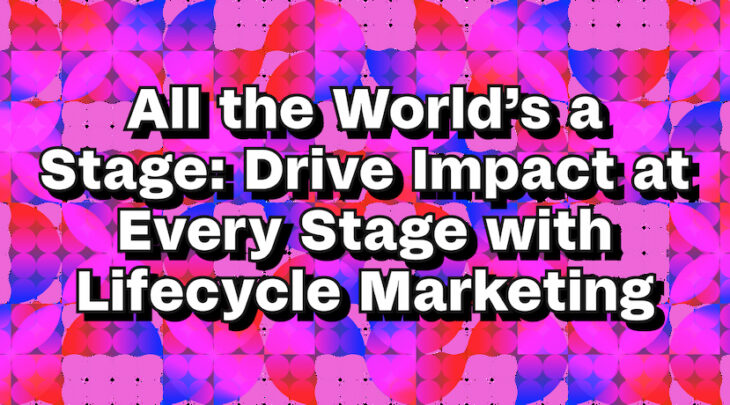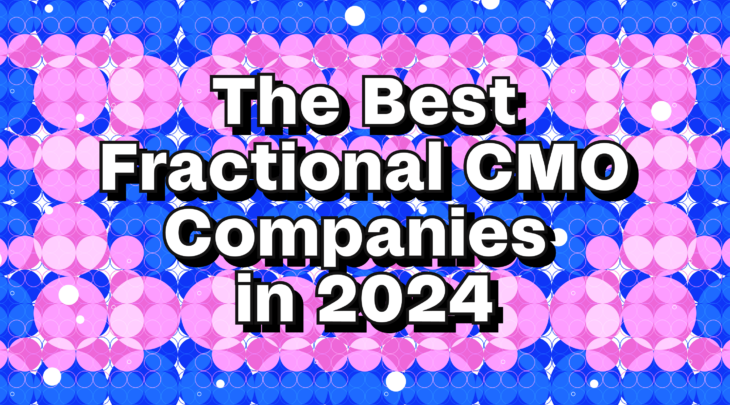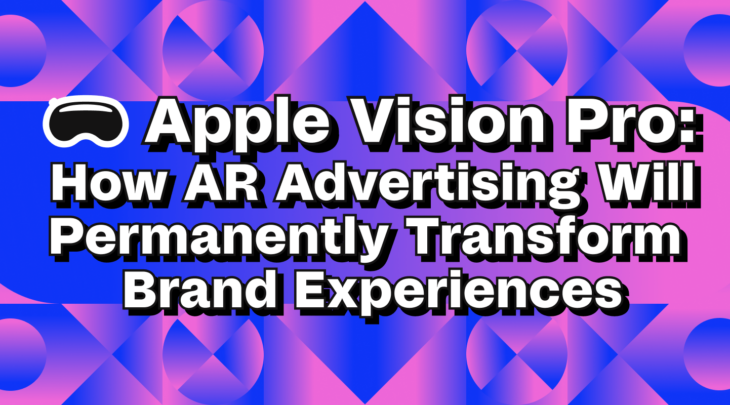Businesses today generate large amounts of data about products, transactions, and consumers, regardless of their industry, geographic location, or size. All these enterprises must find a means to translate that massive stream of data into trustworthy and meaningful information that their decision-makers can use in order to achieve a competitive advantage in the marketplace. For many businesses, this means taking advantage of data visualization tools. But firstly, let’s have a look at what data visualization means.
What is data visualization?
A visual presentation is frequently used to accompany the presentation of data sets, patterns, and crucial insights. Some examples of the aforementioned visualizations are dashboards, yearly reports, sales and marketing materials, investor presentation decks, and almost anywhere else where data must be processed quickly. Data visualization is the term for this. The visual element of a presentation in data visualization has been created to ensure that all parties involved in a debate or decision-making process comprehend and can appropriately interpret the information offered to them. Data visualization is the greatest approach for some learners to grasp information, while for others, it just helps to contextualize facts that are provided verbally or in writing.
What is a data visualization tool?
A data visualization tool is software that assists you in creating a visual representation of data. You’ve probably used a variety of data visualizations previously, even if you don’t work with data every day. The following are some of the most popular visualizations:
General types:
Pie charts are visual representations of percentage breakdowns.
- Tables are used to display data that is too sophisticated to be displayed in text.
- Graphs are a diagram showing the relation between variable quantities.
- Infographics are graphic visual representations of information, data, or knowledge intended to present information quickly and clearly.
- A dashboard is a type of graphical user interface that often provides at-a-glance views of key performance indicators relevant to a particular objective or business process.
- The map is a visualization of geospatial data.
Specific types:
- Timelines are visual representations of events that occur over a period of time.
- Histograms are graphs that represent the distribution of data in a continuous or discrete dataset.
- Gantt charts are diagrams that depict a project’s timetable.
- Box-and-whisker charts, provide a five-number summary of a dataset (which includes the minimum, first quartile, median, third quartile, and maximum figures)
- Scatter plots are graphs that show how two sets of data are related (like height vs. weight)
- Bar charts are creating an interactive that shows the distribution of data in two categories and can be shown as (such as the results of A/B test)
Would you consider data visualization art or science?
Modeling, testing, and mathematical validation are all required in data science. However, in order to correctly, attractively, and simply depict the data, one must use finesse and pay attention to both aesthetic and technical detail when displaying the data. Due to a lack of understanding or an oversimplified aesthetic approach, data can be drastically misinterpreted. Data visualization necessitates knowledge of the raw data as well as the ability to employ graphical elements intelligently and precisely to display meaningful insights from that data. Data visualization is a science and an art.
“Lies, damned lies, and statistics,” said Mark Twain. It is critical that we recognize that statistical analysis is a discipline that is influenced by our preferences; i.e. data can be modified to provide the author with the results he or she wants. As a result, we must be careful in our data analysis, and smart designers and use our skills as artists and scientists to uncover the underlying, objective truths in our data sets.
The data storytellers are the main characters of this role. Data storytellers are excellent communicators and writers, and they are frequently aesthetic and visually focused. Companies are forming hybrid data visualization teams, which combine analytical and artistic talents to form a single entity that can evaluate data and portray the underlying story. They turn data into actionable business intelligence, creating representations that even the most inexperienced corporate decision-maker can grasp.
The term “data artist” isn’t new in theory. Charles Minard was one of the first. Napoleon’s march on Moscow was statistically visualized by him. He created what is widely regarded as the first visualization of hard data by combining many types of data—number of troops, direction, the volume of troops, temperature, and so on. He could have utilized the same material today, but with the help of contemporary technology, he could have added extra layers of information to embellish the story even more.
“Data visualization is the language of decision making. Good charts effectively convey information. Great charts enable, inform, and improve decision making.” — Dante Vitagliano
Why should you be knowledgeable about data visualization?
As the “Age of Big Data” accelerates, visualization will become a more important data tool for making sense of the billions of rows of data generated each day. Data visualization aids in the telling of tales by transforming data into a more understandable format and showing trends and outliers. A good visualization tells a story by reducing noise from data and emphasizing the most important facts. However, it’s not as simple as throwing the “info” element of an infographic on top of a graph to make it appear better. A careful balancing between form and function is required for effective data display. The most basic graph may be too uninteresting to be noticed, or it may send a powerful message; the most striking representation may completely fail to convey the proper idea, or it may speak volumes. The facts and the images must complement each other, and combining outstanding analysis with great storytelling is an ART. With all the online data visualization tools today the life of a marketer has become much easier.
The Design Process for Data Visualization: A Step-by-Step Guide
1. Identify your audience
The least linear of all the thought processes in the design process is analyzing your audience. Rather than depending on computer software or your programming talents, this step enlists the help of the most precious computer of all: your mind.
2. Choose the correct chart
If you’re not sure which chart graph to use, classics like the bar chart for comparing categories and the line chart for visualizing changes over time are good choices. Most of the time, these charts will be “correct,” thus they’re a safe bet.
3. Choose the correct data visualization tool
Sit down and create a rough draft of your visualization on the computer once you’ve got a basic notion of what you want it to look like. For creating data visualizations, there are a plethora of free trial data visualization tools accessible. Some of them are going to be presented to you shortly in the next paragraphs. Others are inexpensive. Others, at least for smaller businesses, are fairly costly.
4. Declutter
It’s time to tweak your data visualization and make your message stand out after you’ve completed the first draft on the computer. There is no such thing as a perfect data visualization tool. Regardless of which tool you use, you’ll have to roll up your sleeves and make deliberate modifications. The first change you should make is to clean up your visualization. There are much too many borders, lines, and superfluous ink in software systems. Look at every single speck of ink on the chart. Is there a specific reason behind it? You don’t need that ink if you can’t explain why you need it.
5. Clarify your analysis with color
Make it fun! Colors are one of the most important aspects of a chart, so choose them carefully. There are a few procedures involved in selecting colors. First, choose a color scheme that complements your client’s style. Second, use action color to direct the reader’s eyes and attention.
6. Explain your analysis with words
The text might help you to clarify your message. It’s difficult to acquire just the correct phrase; normally, keep titles, subtitles, and notes for the end.
7. Review your work
Woohoo! You’ve come close to completing your task. Try to create a self-assessment document or checklist for your work, so you can monitor your development and revise any mistakes before you send your results to your team members.
8. Share it
Send a link to your data visualization to your team once you’ve finished it. Your Data Visualization Design Process concludes with adapting your visualization to other dissemination formats, such as presentations, webinars, handouts, and social media.
Design from the UX perspective
The number of interconnected platforms that generate data has expanded tremendously in today’s digital environment. According to IDC’s recent analysis, the global data volume will exceed 163 trillion gigabytes by 2025. The design of business dashboards has gained popularity in the last decade, as more firms rely on this data for decision-making. UX designers frequently have to explain quantitative data to their teams and users in a logical and aesthetically appealing manner. As a result, it’s critical that they adhere to best practices when it comes to creating compelling data visualizations. UX designers can use data visualization to develop useful analogies that can help humans understand complex datasets.
To better portray data in their designs, UX designers should get familiar with visualization. Two tips that will help you to design visualizations that every user understands.
Convenience: By transforming data into color bars, lines, circles, and other visual features, data visualization makes data analysis easier. Different datasets can be understood by the human brain by transforming them into simple to understand and communicate trends, patterns, behaviors, and conclusions.
Quality: A colored chart/graph can improve the quality of your UX design, including its look and feel, in a certain context. Data tables, on the other hand, make data difficult to comprehend for non-experts.
Data visualization tools of 2022
1. Google Charts
Google Charts is an excellent free data visualization tool for displaying data on your website. The chart gallery has a vast variety of ready-to-use chart kinds, ranging from simple line charts to complicated hierarchical treemaps.
It uses dynamic data, and the outputs are all HTML5 and SVG so that they can be seen in browsers without the need for additional plugins. Google Spreadsheets, Google Fusion Tables, Salesforce, and other SQL databases are among the data sources.
Maps, scatter charts, column and bar charts, histograms, area charts, pie charts, treemaps, timelines, gauges, and many other chart types are available. These graphs can be totally changed via easy CSS editing.
Pros:
- A wide range of chart types is available for free
- Because HTML5/SVG is used, it is cross-browser compatible
- Works with dynamic data
Cons:
- Limited help provided outside the tutorials and forum
2. Infogram
Infogram is a browser-based visualization platform that allows you to convey a story using interactive charts, graphics, infographics, and maps. There are many free templates to pick from. It allows uploads via Google Sheets, Dropbox, MySQL, and direct JSON data feeds in addition to local data uploads. Object animations from Infogram make it simple to zoom, rotate, fade, and slide items into your work. Anyone who wants to stand out with data-driven content should use Infogram. Infogram is worth a look if you’re a marketer, a media organization, or a strategic business leader but more importantly not a professional data scientist.
Pros:
- Intuitive, friendly interface
- Easy way to have aesthetics and data in the same platform
- An excellent tool for creating infographics
- Users’ learning processes are made easier by Infogram’s visual templates
- In addition to interactive visualizations, Infogram Pro makes it simple to produce reports, slides, dashboards, email headers, and social media content
Cons:
- When using the free version, you receive a large Infogram branding when inserting interactive charts onto your website. To get rid of it, you’ll need to upgrade to a paid version.
- It’s an online only solution
- Unable to include fonts, making it tough to retain the company’s corporate identity
3. Excel
The oldest (and most well-known) program on this list is Microsoft Excel. Excel, which was first released in 1987 by Microsoft, allows you to generate tables, charts, and around 20 other types of representations.
Power Pivot is a Microsoft Excel data visualization add-in that allows you to develop data models and analyze big data sets. It has built-in formulas and an auto filter is an application that sorts your data for you.
Pros:
- Windows, macOS, Android, and iOS devices are all supported
- You can change the font, color, and features of your visualization
- It comes with a number of Microsoft programs (so you may already have it on your computer)
- Allows you to import and export data in a variety of file formats
- Version history is included
Cons:
- It may be costly
- If you aren’t a data scientist, it can be difficult to use on large datasets
- Not designed for teams
4. Funnel
Funnel is a marketing reporting solution that allows customers to gather data from various platforms and social media channels and mix it in one dashboard to achieve their KPIs and objectives. It is a cloud-based solution that automates the reporting process and frees people from manual, time-consuming work.
Funnel’s job is to gather data from a variety of websites, platforms, and channels and consolidate it into a single, protected document. This cloud-based solution will save you a lot of manual effort, which will save you a lot of time in the long run.
Funnel.io maintains your data safe and up-to-date while doing so. You or your clients can analyze their performance across several channels and make data-driven, analytical decisions.
Pros:
- Excellent user interface
- Setup that’s simple to do
- The dashboard is simple
- Data from the previous two years
- There are about 500 data ports available
Cons:
- Prices that are too high
- Sources of download errors
- Problems with data transformation
5. Databox
Databox is designed to give KPIs based on data-driven decisions while also assisting you in the creation of reports. You can keep track of your data in real-time and develop strategies, tactics, and plans to help you achieve your goals.
Dashboard designs and examples are critical in marketing reporting solutions because they are where you view your data and measure your progress. Databox, fortunately, includes a plethora of dashboard designs and examples.
Marketing, project management, sales, customer support, SAAS, software development, finance, and eCommerce dashboards may all be designed and seen here.
Pros:
- a user-friendly interface
- Comprehends complex data sets more easily
- Basic dashboard modification is possible.
- Slack integration is simple, and reports may be sent to anyone.
- Allows users to define objectives
- Allows branding by quickly pulling in data and updating it in real-time
Cons:
- Some integrations are difficult to set up, and there aren’t many customization options
- Custom ranges for data analysis are difficult to come by
- Limits on the number of dashboards that can be used at the same time
- Upper tiers quickly become prohibitively pricey
6. Microsoft Power BI
Microsoft Power BI is Excel’s younger family member. Power BI allows you to create data visualizations individually or within reports. One of the top features that Excel has is Microsoft AI which is an artificial intelligence (AI) program that can prepare and analyze data automatically. This platform provides fully customizable dashboards and real-time visualizations.
Pros:
- Many chart layouts and pre-set reports are included.
- Has the ability to use Machine Learning
- Data from Dynamics 365, Excel, SharePoint, Salesforce, and Azure SQL DB can be analyzed (among other sources)
- Excellent for groups.
- Can build a data visualization that is interactive.
Cons:
- Available on desktop and mobile devices, but not very cyber-secure
- People who have previously evaluated data or who routinely use Excel are the best candidates.
- At any given time, it can only process up to 2 GB of data (so not suited to extensive data sets)
7. Figma
While more of a design tool than a data visualization tool, Figma is a collaborative design tool used to map and create many of the app experiences that we know and love today.
Allowing designers to work simultaneously, from anywhere in the world, Figma has become a favorite tool for not only creating user interfaces, but data visualizations as well — and is the tool we use internally to create all of the wonderful graphs and graphics you see in our content.
Pros:
- Fully customizable
- Highly collaborative
- Intuitive for new users
Cons:
- Less precise for data display
- Not created specifically for data visualization
- Steep learning curve beyond basic functionality
Improve your Marketing Efforts with Data Visualization
There are a plethora of data visualization and analysis tools available. These might be simple or complex, and they can be intuitive or obtuse. Not every tool is appropriate for everyone learning visualization methods, and not every tool can be scaled to industry or enterprise needs. If you want to understand more about the possibilities, you may start looking at all the different options we provided to you today.
Keep in mind that effective data visualization theory and abilities are applicable to a wide range of technologies and products. Focus on recommended practices when developing this skill, and experiment with your own particular style when it comes to visualizations and dashboards. Because data visualization isn’t going away anytime soon, it’s critical to establish a foundation of analysis, storytelling, and exploration that you can use regardless of the tools or applications you use. If you found these pieces of information a lot, NoGood team experts are always here to provide you with solutions.








